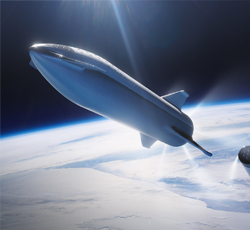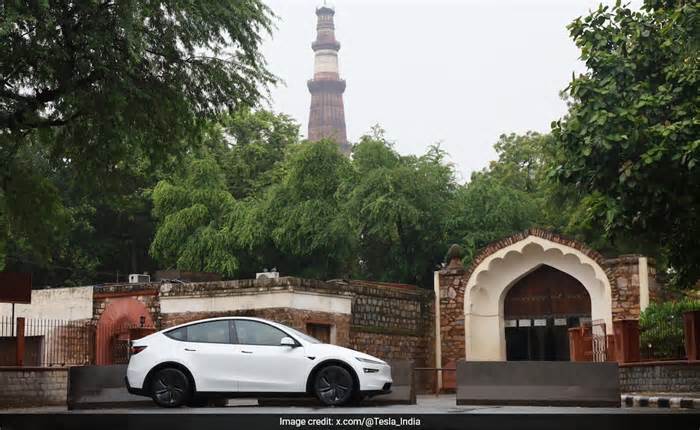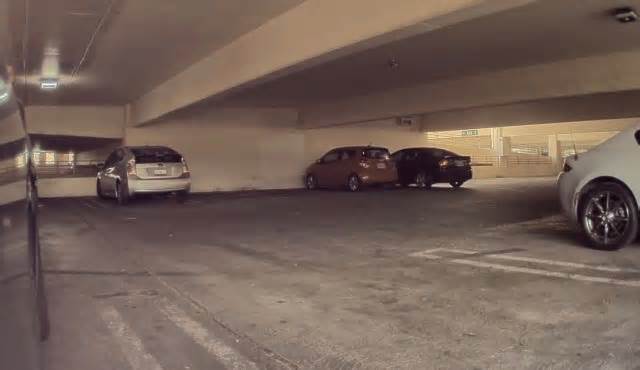
SpaceX launches 46 Starlink satellites, lands Falcon 9 rocket for 100th ...
- by Live Science
- Feb 22, 2022
- 0 Comments
- 0 Likes Flag 0 Of 5

Image 1 of 4
A SpaceX Falcon 9 rocket launches 46 Starlink internet satellites to orbit on the Starlink 4-8 mission from SLC-40 at Cape Canaveral Space Force Base in Florida on Feb. 21, 2022.
(Image credit: SpaceX)
A SpaceX Falcon 9 rocket launches 46 Starlink internet satellites to orbit on the Starlink 4-8 mission from SLC-40 at Cape Canaveral Space Force Base in Florida on Feb. 21, 2022.
(Image credit: SpaceX)
A SpaceX Falcon 9 rocket launches 46 Starlink internet satellites to orbit on the Starlink 4-8 mission from SLC-40 at Cape Canaveral Space Force Base in Florida on Feb. 21, 2022.
(Image credit: SpaceX)
A SpaceX Falcon 9 rocket carrying 46 Starlink internet satellites stands atop SLC-40 at Cape Canaveral Space Force Base in Florida for a launch on Feb. 21, 2022.
(Image credit: SpaceX)
Monday's flight was the 11th launch and landing of this particular Falcon 9 first stage, Anderson said. That tied SpaceX's reuse record, which was set by a different Falcon 9 booster during a Starlink launch in December.
The Falcon 9 first stage on this flight, called Starlink 4-8, previously launched SpaceX's Crew Demo-2 flight (the company's first astronaut flight for NASA in 2020), as well as the Anasis-II satellite mission for South Korea, CRS-21 space station cargo mission for NASA, Transporter-1 and Transporter-3 rideshare missions and five different Starlink missions, SpaceX has said.
Sign up for the Live Science daily newsletter now
Get the world’s most fascinating discoveries delivered straight to your inbox.
Contact me with news and offers from other Future brands
Receive email from us on behalf of our trusted partners or sponsors
By submitting your information you agree to the Terms & Conditions and Privacy Policy and are aged 16 or over.
The two halves of the rocket's nose cone, or payload fairing, also made return trips to space on the flight, each flying on their third mission, Anderson said.
"Improvements on the fairings and our overall refurbishment process has decreased the impact of water landings handled to an overall fairing recovery rate of 93% over the last 14 missions," she added.
Image 1 of 2
A SpaceX Falcon 9 first-stage booster is seen on the droneship A Shortfall Of Gravitas in the Atlantic Ocean after a successful landing following its launch of SpaceX's Starlink 4-8 satellites from Cape Canaveral Space Force Station, Florida on Feb. 21, 2022.
(Image credit: SpaceX)
A SpaceX Falcon 9 first-stage booster (left) approaches the droneship landing platform A Shortfall Of Gravitas to make its 11th landing on Feb. 21, 2022. At right: The mission's upper stage rocket continues to orbit with 46 Starlink internet satellites aboard.
(Image credit: SpaceX)
SpaceX had already launched three big Starlink batches this year — two in January and one on Feb. 3. The Feb. 3 mission ran into serious trouble, however, thanks to a solar eruption, which triggered a geomagnetic storm here on Earth.
That storm increased atmospheric density, boosting drag on the newly launched Starlink satellites. As a result, up to 40 of the 49 spacecraft came crashing back to Earth, SpaceX representatives said.
SpaceX is apparently targeting a higher orbit in which to release its new Starlink satellites on today's flight, according to Spaceflight Now, which reduced the number of satellties from 49 to 46. They will be deployed in a near-circular target orbit that will range between 202 miles and 209 miles (325-337 kilometers) at its highest and lowest points, Spaceflight Now reported.
Related stories:
Please first to comment
Related Post
Stay Connected
Tweets by elonmuskTo get the latest tweets please make sure you are logged in on X on this browser.
Sponsored
Popular Post
Sam Altman's OpenAI Takes On Elon Musk's Grok in AI Chess Tournament Final - Who Won?
28 ViewsAug 09 ,2025






 Energy
Energy


















